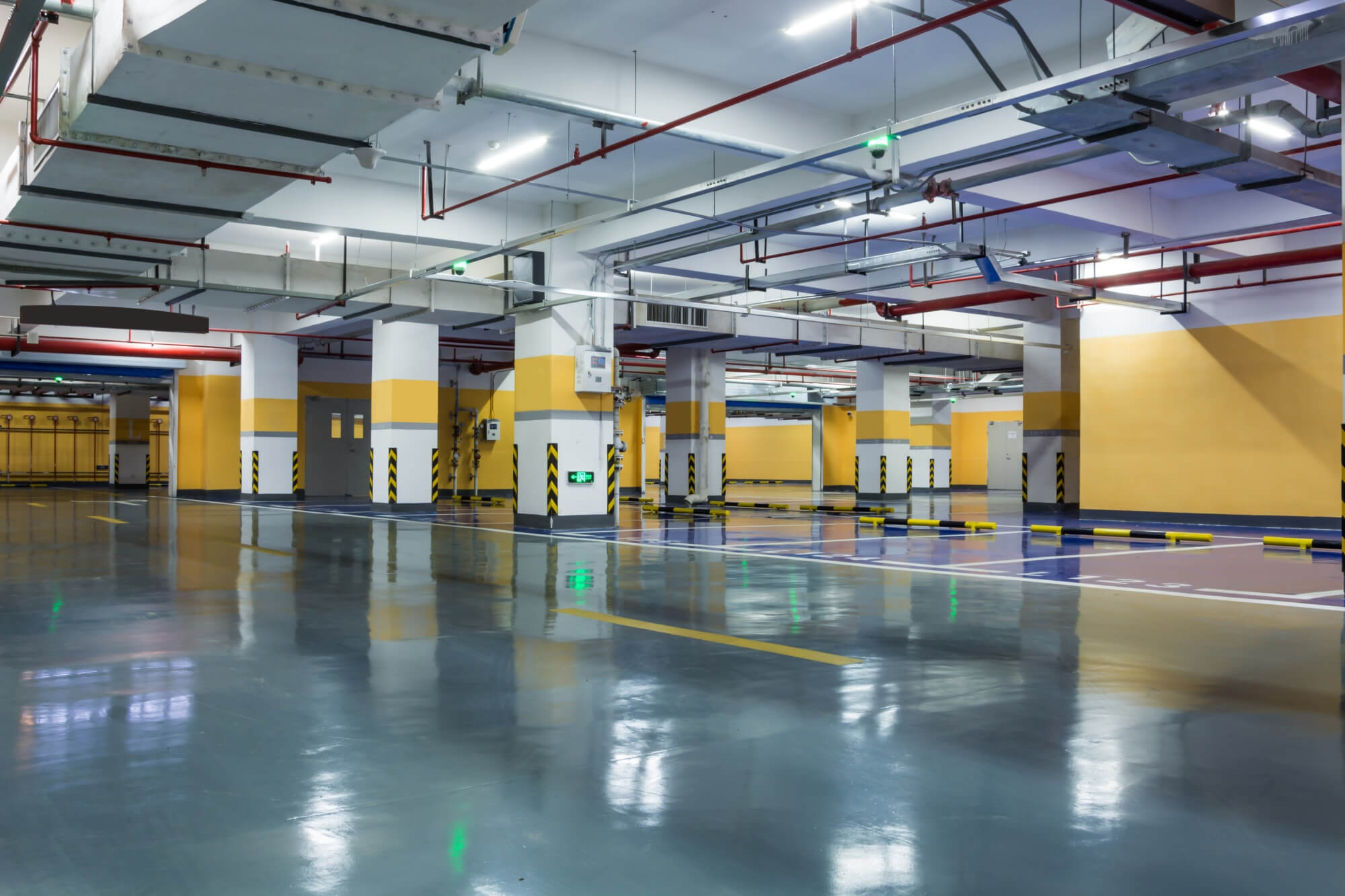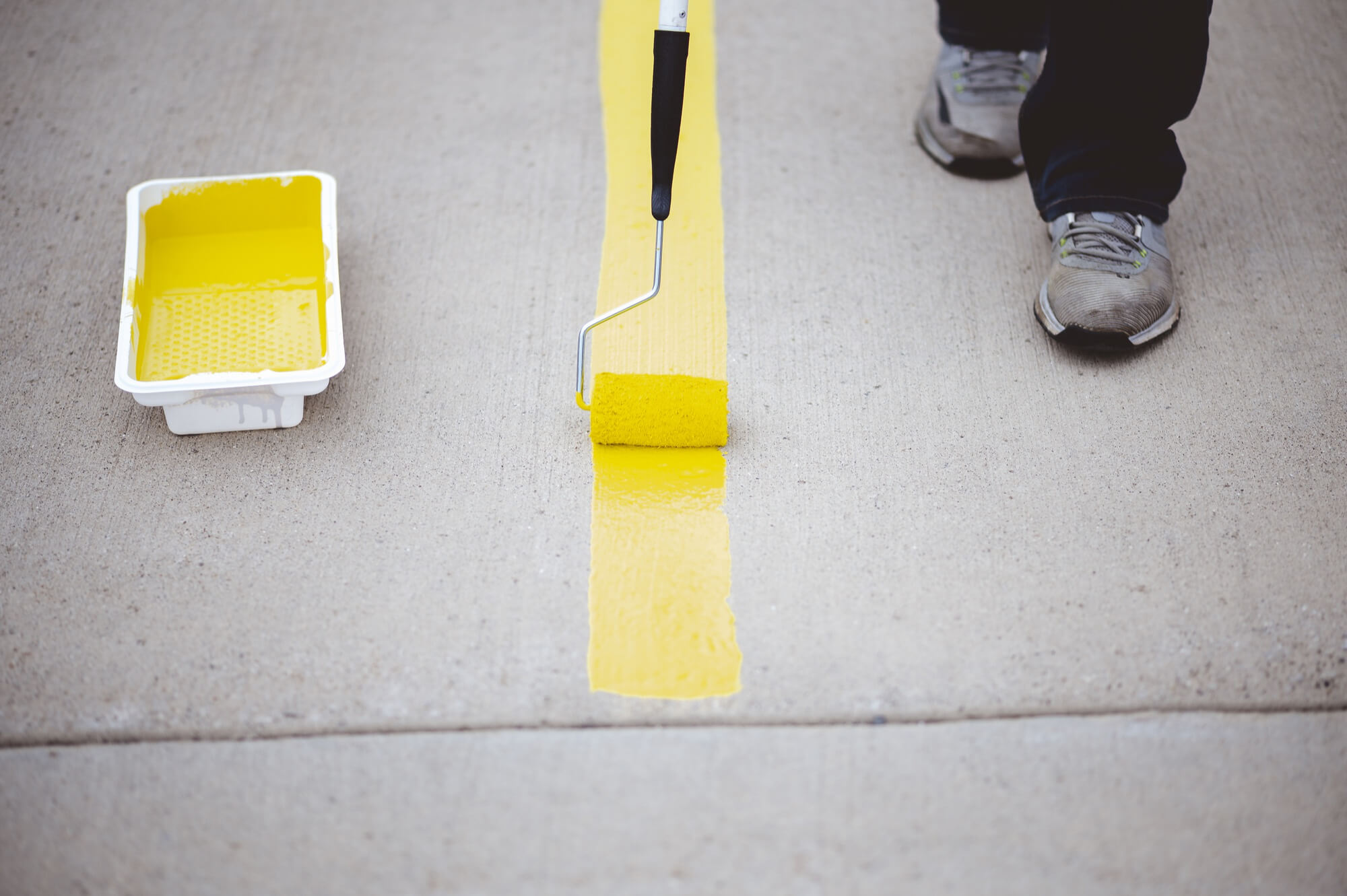A garage floor is subject to various challenges, such as oil spills, tire marks, and heavy vehicle traffic. As a result, it’s essential to choose durable and resistant paint that can withstand these conditions. This article will explore the different types of paint suitable for garage floors and explain their advantages and disadvantages in detail. For professional painting services, trust Weiler Painting to transform your garage floor with high-quality, long-lasting results.
Table of Contents
- Epoxy Paint
- Acrylic Latex Paint
- Polyurethane Paint
- Polyaspartic Paint
- Conclusion
Epoxy Paint: A Popular Choice for Garage Floors
Epoxy paint is a widely-used and popular option for garage floors due to its durability, chemical resistance, and ease of application. It is a two-component paint with a resin and a hardener; you must mix it before applying.
Advantages of Epoxy Paint
- Durability: Epoxy paint creates a hard, glossy surface that can withstand heavy traffic, chemicals, and abrasions.
- Chemical Resistance: It is resistant to oil, gasoline, and other automotive fluids, making it an ideal choice for garages.
- Customizability: Epoxy paint is available in various colors and can be mixed with decorative flakes or quartz for added aesthetics.
- Easy Application: It can be applied using a roller or brush and does not require professional help.
Disadvantages of Epoxy Paint
- Long Curing Time: Epoxy paint takes longer to cure, typically 72 hours or more, before being subjected to vehicle traffic.
- Surface Preparation: Proper surface preparation is vital for epoxy paint adhesion, including cleaning, repairing cracks, and etching the concrete.
Acrylic Latex Paint: An Affordable and Environmentally Friendly Option
Acrylic latex paint is a water-based paint known for its affordability and low environmental impact. It is a suitable choice for garage floors that experience light to moderate traffic.
Advantages of Acrylic Latex Paint
- Affordability: Acrylic latex paint is less expensive than other garage floor paints.
- Low VOCs: It contains softer volatile organic compounds (VOCs), making it a more environmentally friendly choice.
- Easy Application: Acrylic latex paint can be applied with a roller or brush and does not require professional help.
- Quick Drying Time: It dries faster than epoxy paint, allowing for a speedier use of the garage space.
Disadvantages of Acrylic Latex Paint
- Lower Durability: Acrylic latex paint is less resistant to chemicals, abrasions, or heavy traffic than epoxy or polyurethane paint.
- Frequent Repainting: It may require more frequent repainting due to its lower durability.
Polyurethane Paint: A High-Performance Option for Garage Floors
Polyurethane paint is a high-performance option for garage floors, offering excellent durability and chemical resistance. It is ideal for commercial or industrial garage spaces that experience heavy traffic.
Advantages of Polyurethane Paint
- Superior Durability: Polyurethane paint offers excellent resistance to chemicals, abrasions, and heavy traffic.
- UV Resistance: It is resistant to ultraviolet (UV) light, preventing discoloration or fading over time.
- Flexible Finish: Polyurethane paint has a flexible finish that can withstand temperature fluctuations and resist cracking.
- High Gloss: It provides a high-gloss finish that enhances the appearance of the garage floor.
Disadvantages of Polyurethane Paint
- Higher Cost: Polyurethane paint is more expensive than other garage floor paint options.
- Professional Application: It may require professional help for proper application and surface preparation.
- Longer Curing Time: Like epoxy paint, polyurethane paint also takes longer to cure before the garage floor can be used.
Polyaspartic Paint: A Fast-Curing Alternative for Garage Floors
Polyaspartic paint is a relatively new option for garage floors that offers fast curing times and excellent durability. It is a suitable choice for projects that require minimal downtime.
Advantages of Polyaspartic Paint
- Fast Curing Time: Polyaspartic paint cures quickly, often within a few hours, allowing minimal disruption to the garage space.
- High Durability: It provides excellent resistance to chemicals, abrasions, and heavy traffic, similar to polyurethane paint.
- UV Resistance: Polyaspartic paint is UV-resistant, which helps prevent discoloration or fading.
- Temperature Tolerance: It can be applied in various temperatures, making it suitable for multiple climates.
Disadvantages of Polyaspartic Paint
- Higher Cost: Polyaspartic paint is more expensive than epoxy or acrylic latex paint.
- Professional Application: Due to its fast curing time, polyaspartic paint requires professional help for proper application and surface preparation.
Conclusion: Choosing the Right Paint for Your Garage Floor
Selecting the right paint for your garage floor depends on several factors, such as budget, durability requirements, and environmental considerations. Epoxy paint is famous for its durability and chemical resistance, while acrylic latex paint is affordable and environmentally friendly. Polyurethane paint offers superior performance for commercial or industrial garage spaces, and polyaspartic color provides a fast-curing alternative.
By comprehending the advantages and disadvantages of each paint type, you can make an informed decision that best suits your garage floor’s specific needs. Proper surface preparation and application are crucial for a successful and long-lasting garage floor transformation, regardless of your chosen paint.



